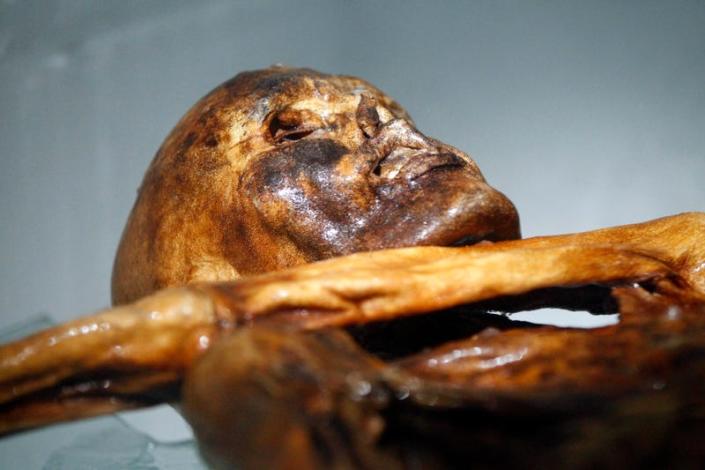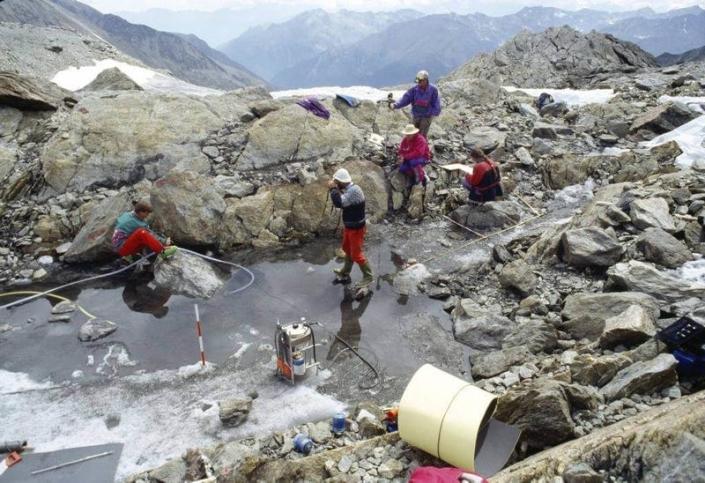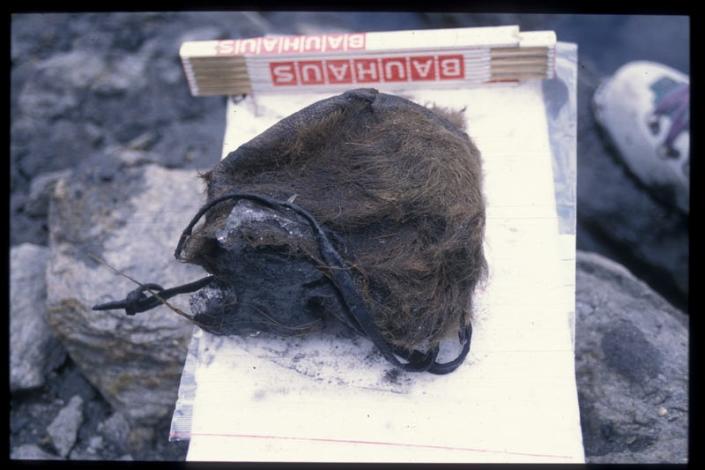
Ötzi, a 5,300-year-old mummy found in 1991.
In 1991, a pair of climbers encountered a human physique protruding of the ice excessive within the Italian alps. Although its pores and skin was preserved—full with tattoos—the physique turned out to be 5,300-year-old stays, mummified by the frigid, dry situations by which the person died. Now often known as Ötzi, the famously well-preserved mummy has given researchers a outstanding look into the lifetime of a Stone Age individual.
However latest evaluation of 30 years of scholarship suggests the story of Ötzi’s dying and subsequent mummification may have revision. The widespread story—primarily based on preliminary evaluation of the stays and follow-up research within the early 2000s—is that Ötzi was fatally wounded and staggered into the Alps to flee his assailant. He died there and quickly froze, the place his stays (and his toolkit) remained for the subsequent 5 millennia.
Learn extra
A group of archaeologists now posit that Ötzi was not instantly buried in ice and was repeatedly uncovered to the weather over the subsequent 1,500 years. The group’s analysis was printed this week in The Holocene.

The Ötzi excavation web site, excessive within the Alps.
“The story is so at odds with how glacial archaeological websites work,” stated Lars Pilø, a glacial archaeologist and the research’s lead creator, in an e mail to Gizmodo. “We conclude that the discover circumstances surrounding Ötzi are usually not a string of miracles, however might be higher defined by regular processes on glacial archaeological websites.”
Ötzi’s stays doubtless melted out of the ice many occasions, the researchers say. Relatively than being frozen in time and area from the Stone Age till 1991 due to some superlative success, Ötzi thawed out and refroze and was moved across the mountaintop because the atmosphere modified, based on the research.
Ötzi was in a gully, which was beforehand thought to have allowed the mum’s preservation regardless of the motion of ice above it; this group contends that Ötzi really died elsewhere on the mountain and was ultimately moved down into the gully by unusual environmental adjustments.
“This can be a good factor,” Pilø added, “as a result of it raises the chance of discovering one other ice mummy elsewhere, when no distinctive circumstances are wanted.”
Ötzi is as historical to Tutankhamun because the Emperor Claudius is to us. However the preservation of the mum has given scientists a uncommon alternative to look immediately again in time. Evaluation of the mum’s colon, abdomen, and the isotopes in its hair revealed the Iceman’s weight loss program: ibex and purple deer, cereals, and poisonous fern. Isotope ratios in Ötzi’s ax traced its origins to Southern Tuscany. Scientists have even counted all 61 tattoos on the traditional man’s shriveled pores and skin.
The group additionally believes that the mum’s instruments—Ötzi was discovered with a backpack body, a fur cap, a quiver, and an ax—have been broken by the weather reasonably than by his historical assailant. The group’s conclusions draw on years of Ötzi scholarship, which proffer an exhaustive listing of potentialities for the way the Stone Age man ended up useless and mummified so excessive within the mountains.

Ötzi’s fur cap, as seen when it was first found.
Pilø can also be the creator of the Secrets and techniques of the Ice weblog, a web site dedicated to glacial archaeology, particularly gadgets discovered thawing from glaciers in Northern Europe. Local weather change has accelerated the invention of those objects, particularly from ice patches, which deal with frozen supplies way more gently than dynamic glaciers, which will be apt for grinding objects into oblivion. In 2020, a trove of searching artifacts was present in an ice patch in Norway; in one other ice patch, as soon as a Viking mountain go, researchers discovered the stays of a canine, its leash, mittens, footwear, and components of a sled.
Simply final 12 months, a 1,300-year-old ski appeared out of thawing ice. Although not as superlative as Ötzi, discoveries like these will turn into extra frequent as ice melts in a warming local weather, Pilø stated.
And primarily based on the group’s findings, preserved human stays could seem extra regularly, too. If Ötzi wasn’t a particularly fortuitous scenario of preservation, extra mummies could quickly emerge from the ice.
Extra: Ultimate Days of Ötzi the Iceman Revealed By way of New Evaluation of His Instruments
Extra from Gizmodo
Join Gizmodo’s Publication. For the newest information, Fb, Twitter and Instagram.




